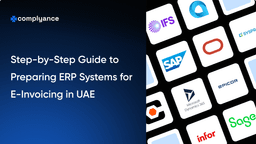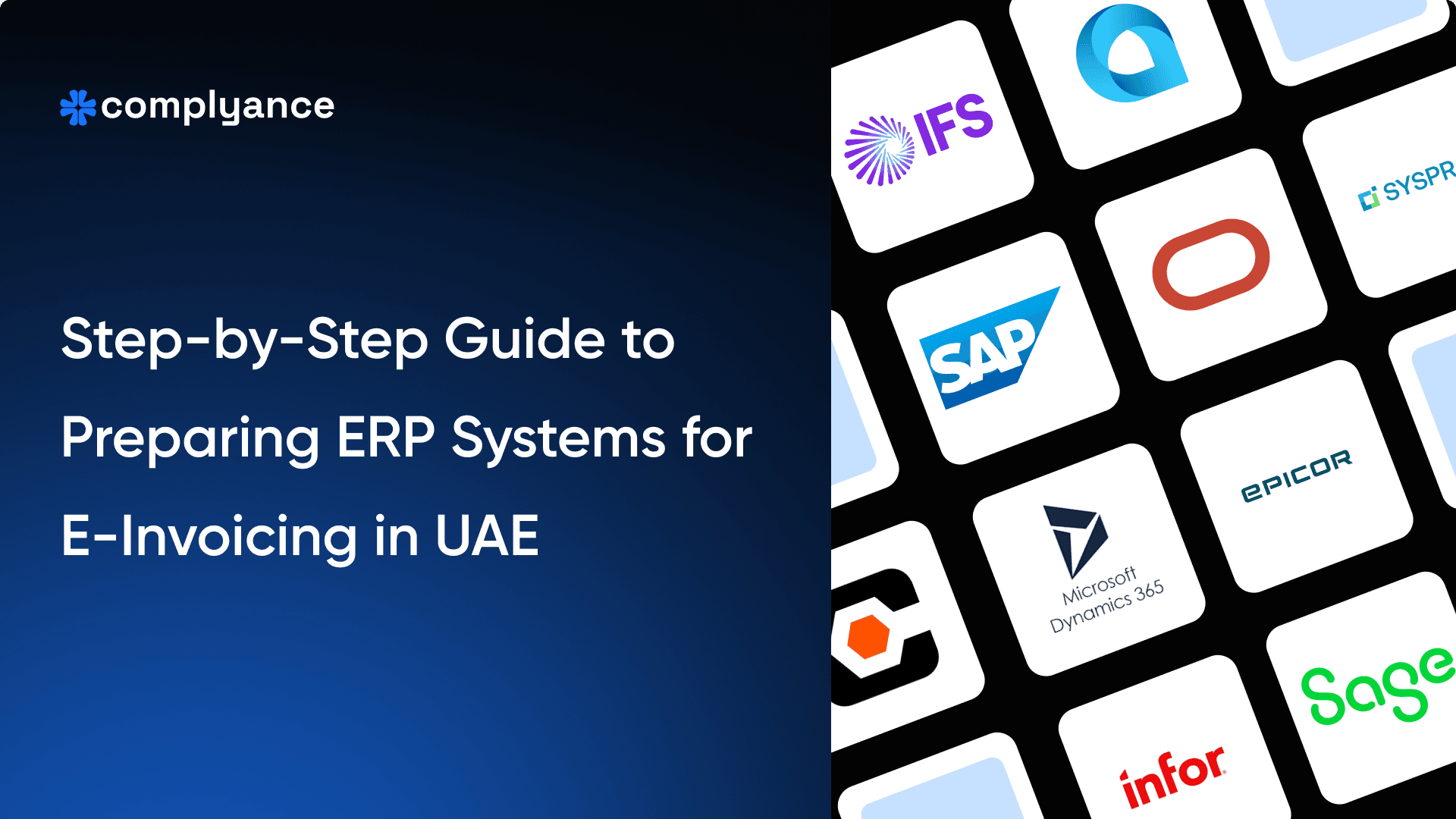What Is PINT AE? The UAE’s Official E-Invoicing Specification Explained
Learn what the PINT AE specification is, how the UAE e-invoicing XML format works, and the key rules, validations, and requirements for full UAE e-invoicing compliance.

Table of Contents
The UAE is moving toward a fully digital invoicing environment, with e-Invoicing becoming the foundation for real-time, structured data exchange between businesses and the government.
On 6 February 2025, the UAE Ministry of Finance (MoF) released the Public Consultation Document outlining the country’s move to a national e-Invoicing system.
The new UAE e-Invoicing framework introduces a standardized e-Invoice format called PINT AE, which is built on the international Peppol BIS Billing 3.0 model and customized to include UAE-specific tax and regulatory requirements.
Every e-invoice must now follow this PINT AE format so that suppliers, buyers, and the Federal Tax Authority (FTA) can exchange data automatically in a universal language that systems can easily read.
In this article, we’ll simplify what this means, from understanding PINT AE and UBL 2.1, to seeing how invoices are validated and submitted under the Decentralized Continuous Transaction Control and Exchange (DCTCE) model.
What Is E-Invoicing?
E-invoicing, also known as electronic invoicing, is the process of creating and exchanging invoices in a structured digital format that computers can read and validate automatically. Instead of sending a PDF or printed invoice, businesses submit these digital invoices through approved platforms like Complyance, where they are validated and shared with both the buyer and the government for compliance and reporting.
What is PINT AE?
PINT AE (Peppol International UAE) is the official e-invoice format mandated by the UAE Ministry of Finance (MoF). It is a UAE-specific version of the global Peppol BIS Billing 3.0 model and is built on UBL 2.1 (Universal Business Language). This standard defines how every e-invoice should be structured, including the order of fields, the names of each tag, and the data that must be present.
Some key elements defined in the standard include:
- Invoice Number
- Tax Registration Number (TRN) for both supplier and buyer
- Buyer and Seller information
- Tax breakdowns, line items, and totals
By using this consistent XML structure, systems across the UAE and other countries can communicate easily and accurately. Every business that issues or receives e-invoices in the UAE is required to follow this format.
Structure of the UAE Standard E-Invoice (XML Format)
The UAE standard e-invoice uses a clear, organized XML structure defined in the PINT AE Data Dictionary. Each part of the XML file represents a section of the invoice, and every section contains fields marked as Mandatory (M), Conditional (C), or Optional (O). Let’s look at the main sections and what they include.
a) Invoice Header This part provides key information about the invoice itself:
- IBT-001 – Invoice Number (Unique ID for the invoice)
- IBT-002 – Invoice Issue Date (Format: YYYY-MM-DD)
- IBT-003 – Invoice Type Code (Tax invoice, Credit note, or Debit note)
- IBT-005 – Invoice Currency Code (e.g., AED or USD)
b) Seller and Buyer Details This section captures details of both trading partners:
- IBT-027 / IBT-044 – Seller and Buyer Names
- IBT-031 / IBT-048 – Seller and Buyer Tax Registration Numbers (TRN)
- IBT-034 / IBT-049 – Electronic Addresses for digital delivery
- IBG-05 / IBG-08 – Postal Addresses (including Emirates codes like DXB or AUH)
c) Line Items Each good or service appears as a separate item with full details:
- IBT-153 / IBT-154 – Item Name and Description
- IBT-129 / IBT-146 – Quantity and Unit Price
- IBT-151 / IBT-152 – Tax Category and Rate
- IBT-158 – HSN Code (for goods)
- BTUAE-17 – SAC Code (for services)
d) Tax Breakdown Shows how VAT is applied across different items:
- IBT-116 – Taxable Amount (before VAT)
- IBT-117 – Tax Amount (VAT charged)
- IBT-118 – Tax Category (Standard, Zero-Rated, Exempt, Reverse Charge)
- IBT-119 – Tax Rate (in percentage, e.g., 5 %)
e) Totals and Payment Details This section summarizes the invoice:
- IBT-109 – Invoice Total Without Tax
- IBT-110 – Total Tax Amount
- IBT-112 – Invoice Total with Tax
- IBT-115 – Amount Due for Payment
- IBT-081 – Payment Type (bank transfer, card, etc.)
Understanding Field Types: Mandatory, Optional, and Conditional
Every field in the UAE e-Invoice XML has a rule that decides whether it must appear or not.
| Field Type | Description | Examples | When It’s Required |
|---|---|---|---|
| Mandatory (M) | Must always be present in every e-invoice. Missing any of these fields will cause validation failure. | - IBT-001 – Invoice Number - IBT-002 – Invoice Issue Date - IBT-031 / IBT-048 – Seller and Buyer TRN - IBT-116 – Taxable Amount - IBT-117 – Tax Amount - IBT-112 – Invoice Total with Tax | Always required for all invoice types. |
| Optional (O) | Used to provide extra context or details that are not mandatory but enhance the invoice. | - IBT-072 – Actual Delivery Date - IBG-32 – Item Attributes (e.g., color or batch) - IBT-159 – Country of Origin | Include when relevant to the transaction or business use case. |
| Conditional (C) | Required only in specific scenarios, depending on transaction details or other field values. | - BTUAE-04 – Exchange Rate (if currency ≠ AED) - BTUAE-17 – Service Accounting Code (for services) - BTUAE-15 – Seller Registration ID Type (if used) - IBT-111 – Tax Amount in Accounting Currency (if different) | Include only when the defined condition applies. |
Cardinality Rules
Cardinality rules define how many times a specific field can appear in a UAE e-Invoice XML file. They ensure that each data element is used correctly according to its purpose in the invoice structure.
| Cardinality | Meaning | Example |
|---|---|---|
| 1..1 | The field must appear exactly once. | Invoice Number (IBT-001) |
| 0..1 | The field may appear once or not at all. | Delivery Date (IBT-072) |
| 0.. n | The field can appear multiple times. | Line Items, Tax Categories |
Technical Guidelines for UAE E-Invoicing Implementation
To comply with the UAE’s e-Invoicing framework, every business must ensure that invoices are created, validated, and exchanged according to the PINT AE standard. The following guidelines outline the key technical rules for proper implementation.
1. Use XML Format Only
The UAE e-Invoicing system accepts only XML files that conform to UBL 2.1 and the PINT AE profile. Other formats such as PDF, Word, Excel, or image files are not valid for statutory submission or VAT compliance.
2. Follow the PINT AE Schema and Sequence
Each element in the XML must appear in the correct order, as defined in the PINT AE Data Dictionary. Sections like the header, party details, delivery, tax, line items, and totals must follow the standard structure. Examples of Required Tags
- IBT-001 – Invoice Number
- IBT-002 – Invoice Issue Date
- IBT-116 – Taxable Amount
- IBT-117 – Tax Amount
- IBT-112 – Invoice Total with Tax
- IBT-115 – Amount Due for Payment
- IBT-024 – Specification ID (must begin with urn:peppol:pint:billing-1@ae-1)
- CustomizationID – Identifies the PINT AE profile being used
3. Use Valid Code Lists and Formats
All codes and formats must follow approved international standards to ensure system compatibility.
| Field Type | Standard Used | Examples |
|---|---|---|
| Currency | ISO 4217 | AED, USD |
| Country | ISO 3166-1 Alpha-2 | AE, SA |
| Units of Measure | UNECE Recommendation 20 | H87 (pieces), LTR (liters) |
| Date Format | ISO 8601 | 2025-07-15 |
| Amounts | Decimal format without symbols | Valid: 50.00, Invalid: AED 50 |
4. Digital Signature and Security
Each e-invoice must include a valid XML Digital Signature to ensure authenticity and prevent tampering. The signed invoice should contain certificate references and timestamps. All e-invoice transmissions must use the AS4 protocol for secure, encrypted, and traceable exchange between systems, ensuring data integrity, confidentiality, and non-repudiation.
Common Validation Errors to Avoid
1. Totals Do Not Reconcile
All line totals, VAT subtotals, and overall invoice totals must match exactly. Even small rounding differences or calculation mismatches can lead to automatic rejection during validation.
2. Invalid TRN Pattern or Identification ID
The Tax Registration Number (TRN) or Identification ID must follow the exact format defined by the Federal Tax Authority (FTA). Using the wrong number of digits or invalid prefixes will result in an error message from the validator.
3. Incorrect Date Formats
Dates must always follow the YYYY-MM-DD format (for example, 2025-07-15). Any other format such as 15/07/2025, 15-Jul-25, or 15.07.2025 will be rejected by the system.
4. Unapproved Code Lists
Only use standardized codes approved by international authorities like ISO and UNECE. For instance, currency codes must follow ISO 4217 (AED, USD), and units of measure must follow UNECE Recommendation 20 (H87 for pieces, LTR for liters).
5. Missing Conditional Fields
Some fields are required only under certain conditions and must not be skipped when applicable. For example, BTUAE-04 (Exchange Rate) is mandatory if the currency is not AED, and BTUAE-17 (Service Accounting Code) must be included for service-related invoices.
How Complyance Simplifies PINT AE Implementation
You do not have to deal with XML structures, data validation checks, or PINT AE rules manually. Complyance automatically converts your invoice into the PINT AE specification, validates all required data, and delivers it securely to FTA, and you can set up the entire process within a week.Our platform manages the full schema structure, digital signatures, and AS4 transmission so your team can focus on operations instead of e-invoicing compliance.
To see how the UAE e-invocing implementation setup works in practice, read our step-by-step implementation guide.
Conclusion
The UAE’s shift to structured e-invoicing marks a major milestone in its digital transformation journey. By adopting the PINT AE XML format, businesses can ensure that every invoice they issue or receive meets the MoF and FTA’s technical and e-invoicing standards. Following the PINT AE schema, using approved codes and formats, and validating invoices through Accredited Service Providers will help companies avoid common errors and achieve seamless, real-time exchange of invoice data. This move not only strengthens e-invoicing compliance but also lays the foundation for a smarter, faster, and fully connected invoicing ecosystem across the UAE.
Related posts
Frequently Asked Questions
PINT AE (Peppol International for the UAE) is the official e-invoice format defined by the UAE Ministry of Finance. It’s based on the global Peppol BIS Billing 3.0 model and follows UBL 2.1 standards. Every business issuing or receiving invoices in the UAE must structure their e-invoices according to PINT AE rules, including tags like invoice number, TRN, tax breakdowns, and total amounts. This ensures invoices can be automatically read, validated, and exchanged with the Federal Tax Authority (FTA) in a standardized XML format.
Yes. The UAE is introducing mandatory e-invoicing for all VAT-registered businesses under the Ministry of Finance (MoF) framework. Companies must generate, validate, and exchange invoices electronically using the PINT AE XML format through accredited platforms. Both suppliers and buyers must ensure compliance, as e-invoicing will be required for B2B, B2G, and later B2C transactions during the upcoming phases of rollout.
To comply with UAE e-invoicing, all invoices must:
- Be generated in XML (UBL 2.1) format following the PINT AE schema.
- Include valid digital signatures and follow AS4 secure transmission protocol.
- Use approved ISO and UNECE code lists (e.g., ISO 4217 for currency, UNECE 20 for units).
- Contain mandatory fields such as invoice number, issue date, seller/buyer TRN, taxable amount, tax total, and invoice total.
Failure to meet these criteria may result in invoice rejections by the FTA validator.
The most frequent validation errors include:
- Mismatched or unreconciled totals between line items and the invoice summary.
- Invalid TRN or incorrect number formats.
- Dates are not using the YYYY-MM-DD format.
- Missing conditional fields (e.g., exchange rate for non-AED currency).
- Using unapproved code lists for currency or units.
Avoiding these mistakes and validating each invoice through an Accredited Service Provider (ASP) like Complyance ensures smooth submission and zero rejection risk.
Complyance automates the entire e-invoicing process. It converts invoices into the PINT AE format, validates every field, digitally signs the XML, and transmits it securely to the FTA using the AS4 protocol. Businesses can integrate once with Complyance’s API and go live within a week—without managing schema logic or format updates. The platform stays synchronized with MoF and FTA changes, ensuring long-term compliance and reducing manual workload for IT, finance, and tax teams.
Subscribe to our Newsletter
Get the latest compliance updates, e-invoicing news, and expert tips delivered to your inbox.
ABOUT COMPLYANCE
Empowering businesses to automate e-invoicing and stay compliant in 100+ countries. Our platform simplifies regulatory complexity for enterprises and fast-growing companies.






